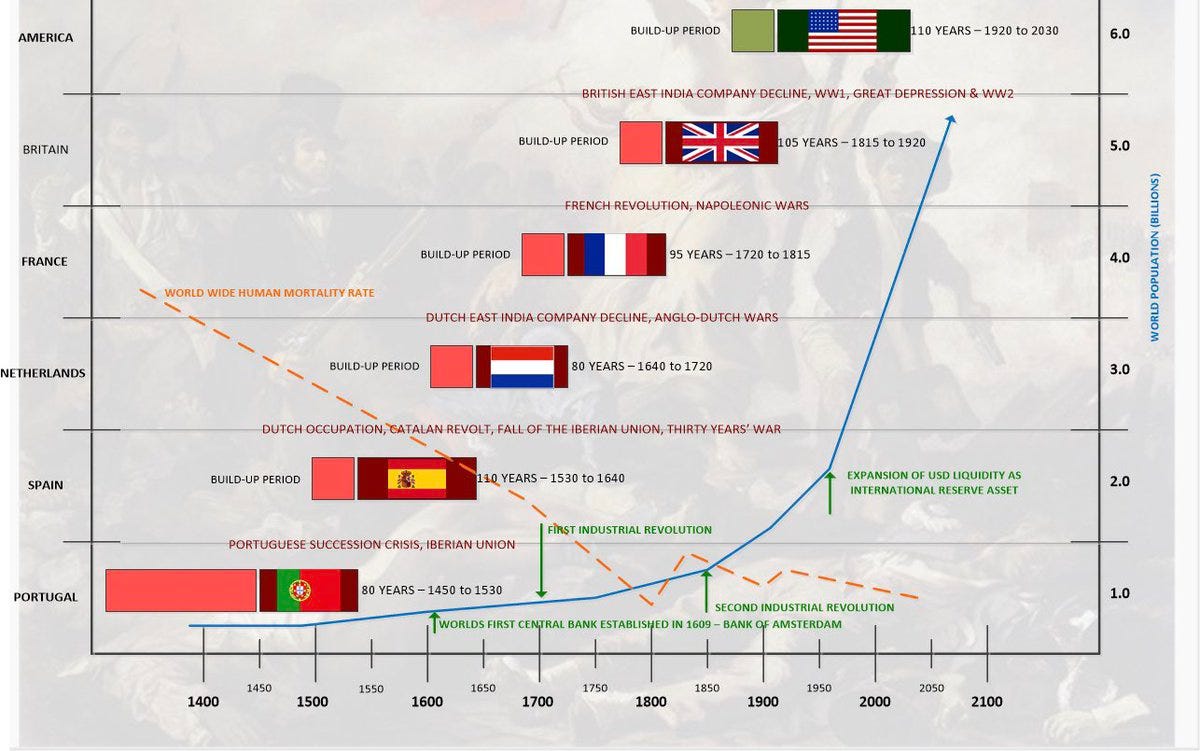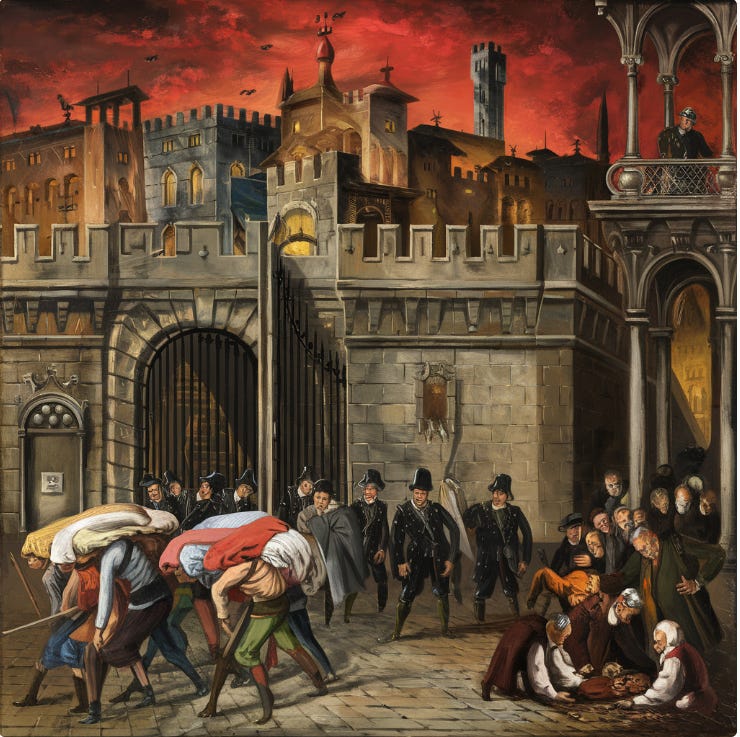From Golden Florins to Silver Threads: Unraveling Florence's Textile Tapestry of Walls, Tariffs & Economic Turmoil
Another Sunday Silver Sermon by Jon Forrest Little
Western Civilization: Dominant or Traditional Money from 1450 to Present
Shown in chronological order
1. Portuguese Real
2. Spanish Real
3. Dutch Guilder
4. British Pound
5. US Dollar
Traditional Money prior to Portuguese & Spanish Real
Before the rise of the Portuguese Real, Spanish Real, Dutch Guilder, British Pound, and US Dollar, two earlier metals were struck that played significant roles in international trade. We refer to any metal (gold or silver coin of high purity) as “Traditional Money.”
The Florentine Ducat, introduced in 1252, was the first to gain prominence. It was a gold coin of high purity that became widely accepted throughout Europe and the Mediterranean. Following the Florentine Ducat, the Venetian Ducat emerged in 1284 and quickly became the preferred medium of exchange for international trade.
The Venetian Ducat's stability and widespread acceptance made it the dominant global money for centuries, facilitating trade across Europe, the Middle East, and beyond. These ducats paved the way for the subsequent versions of Traditional Money that would shape global economics.
What industry backed the rise of Florence, and What type of sickness plagued the villagers of Florence?
Florence and the Path of Prosperity.
The first money used in Florence, Italy, was a ducat called the Florin.
The Gold Florin, a unique currency (Traditional Money) introduced in 1252, preceded the Venetian ducat for over 30 years, marking a significant milestone in Florence's economic history.
The Florin, with its consistent weight and high gold content, quickly rose to international prominence and became traditional money in the global market.
Florence's textile industry, particularly wool production, flourished due to several factors. First, the area was home to swaths of the finest grasslands, and large herds of sheep could graze and thrive among these grounds.
But remember this paragraph because later, it will be evidence in the crime story as we reveal what became Florence's undoing. Florence also imported raw wool and other necessary raw materials, such as dies and machine parts for looms, from various sources, including other parts of Italy, Europe, and the Western Mediterranean.
The Florentine wool guild, Arte della Lana, demonstrated remarkable organizational skills by coordinating the complex 27-step process of transforming raw wool into finished luxury cloth.
At its peak, the Arte della Lana employed 30,000 workers, directly and indirectly supporting about a third of Florence's population.
The industry's impressive output was evident in the production of 100,000 lengths of cloth annually, a testament to Florence's industrial prowess.
Florentine textiles were highly prized throughout Europe, and the city was the primary supplier of luxury cloth and fur to the papacy.
The local weavers were exceptionally busy, with looms scattered throughout homes across the city.
The industry involved various skilled workers, including carders, stretchers, dyers, weavers, tailors, and stitchers.
By the late Middle Ages, over half of Florence's population worked in the wool sector.
The success of Florence's textile industry was primarily due to the city's skilled workforce, efficient guild system, and extensive trade networks rather than local resources or protectionist policies
Florence and the Path of Ruin
the purple line represents a wall built around Florence
The City wall around Florence did serve a function of protection but also another form of protection (interference with free market mercantilism)
Bankers and Politicians figured out a way to conspire against the villagers and made up excuses like “we are here to help regulate or inspect the imports”
By controlling entry points, city authorities could more easily monitor and tax incoming merchandise, including raw materials for the textile industry like supplies necessary for the workers.
Florence imposed tariffs on imported supplies, dies and other raw materials
This increased production costs for local manufacturers.
These higher costs were passed on to workers in the form of lower profits and reduced employment opportunities.
Villagers who relied on the textile industry for their livelihood would find themselves squeezed financially.
As economic pressures mounted, these villagers were forced to seek loans to cover basic living expenses or to invest in tools and materials to remain competitive in the industry.
With limited options, they turned to local bankers.
These moneylenders charged high interest rates.
And many were charged even higher than high rates ( especially if the borrowers were considered high-risk ) due to their precarious financial situation.
This cycle of economic pressure and high-interest borrowing trapped villagers and workers in a cycle of debt, further exaggerating their financial struggles.
The combination of protective tariffs, reduced income, and usurious loans created a condition of economic hardship for those dependent on the textile industry.
What was the Path to Prosperity converted into The Path of Ruin.
Let's reflect on Florence's story.
It reminds us that all actions can have unforeseen consequences. The walls and tariffs, meant to protect, ended up restricting villagers and pushing them into poverty.
This teaches us to be mindful of how political and economic decisions affect others, especially the vulnerable.
It encourages us to create communities that support each other rather than systems that might intentionally cause harm.
The two paintings below both show villagers working in the textile industry.
In one, they trade freely. Conversely, we see the uninvited, unwanted, and outside interference.
Which village would you choose as home?
Ponder this as we all consider the importance of freedom, fair trade, and community support in our lives.
end of lesson
our opinions are not our sponsors opinions
editorial department are sole and separate from promotions department
not financial advice
fiat currency is the path of ruin
Silver and Gold (traditional money) are the path of prosperity













